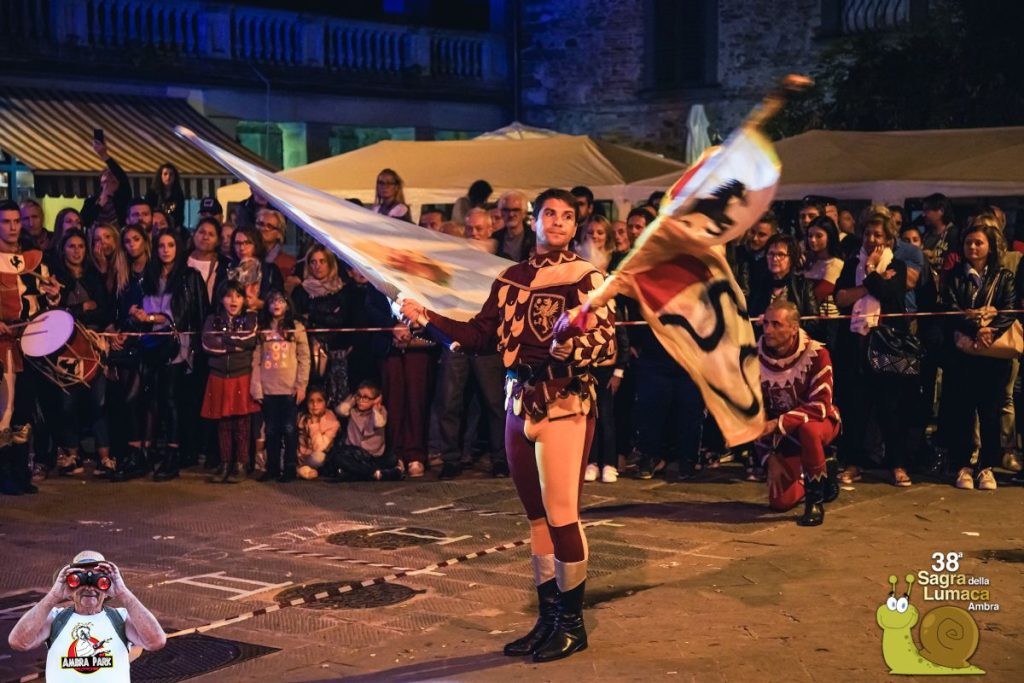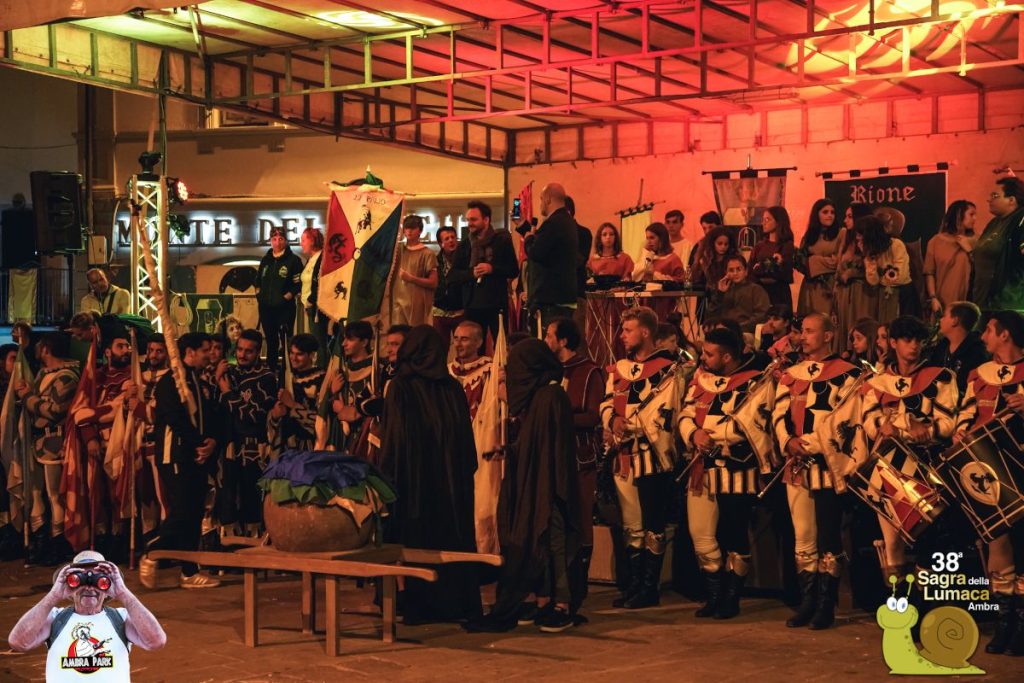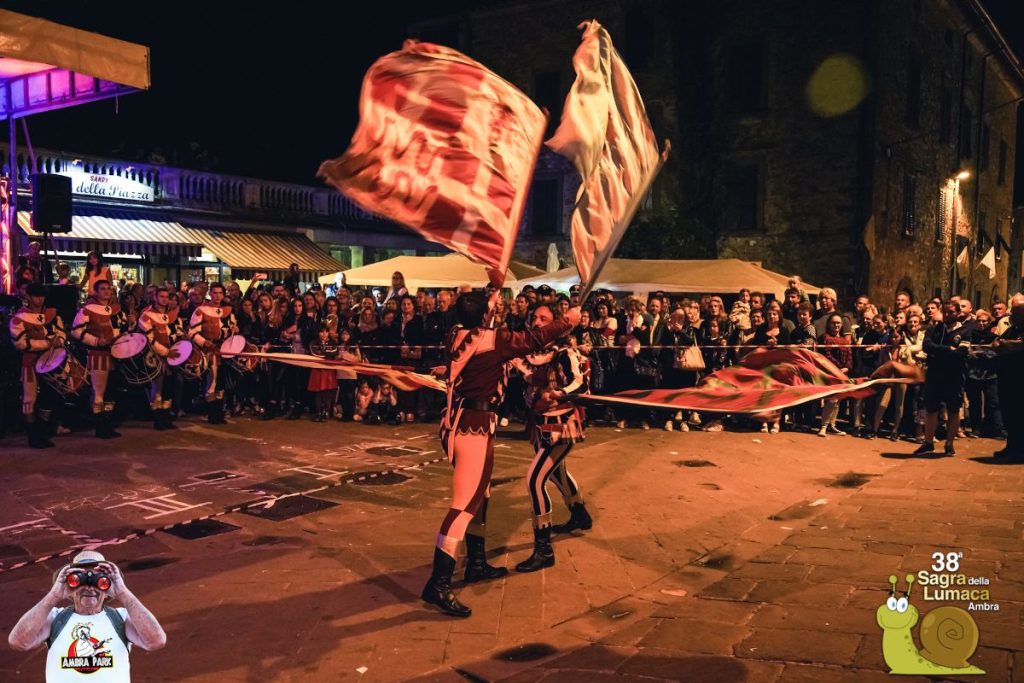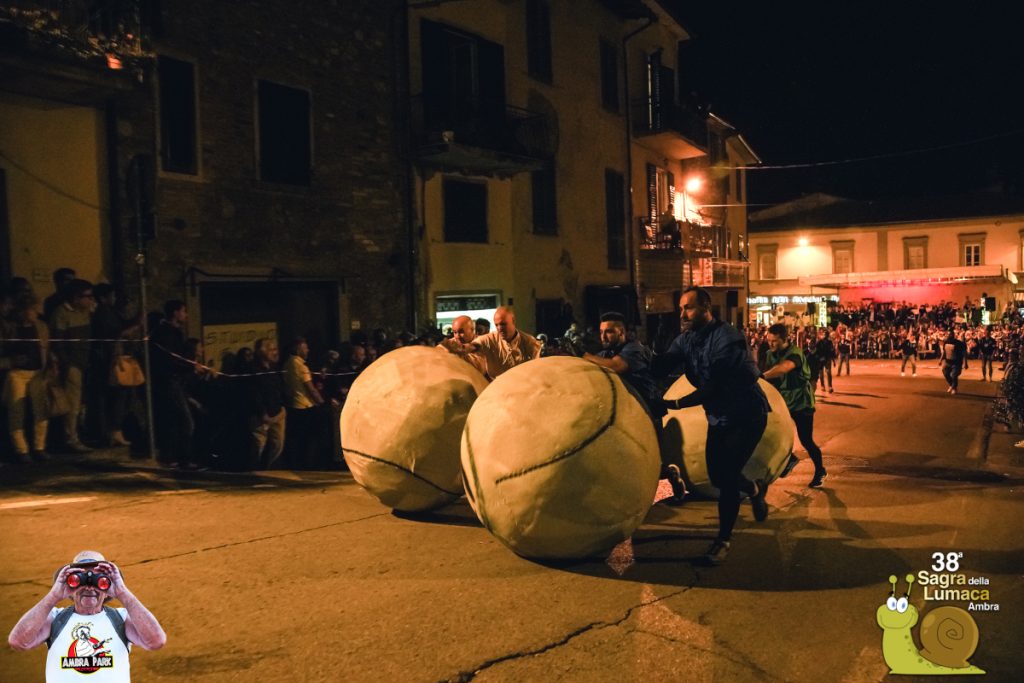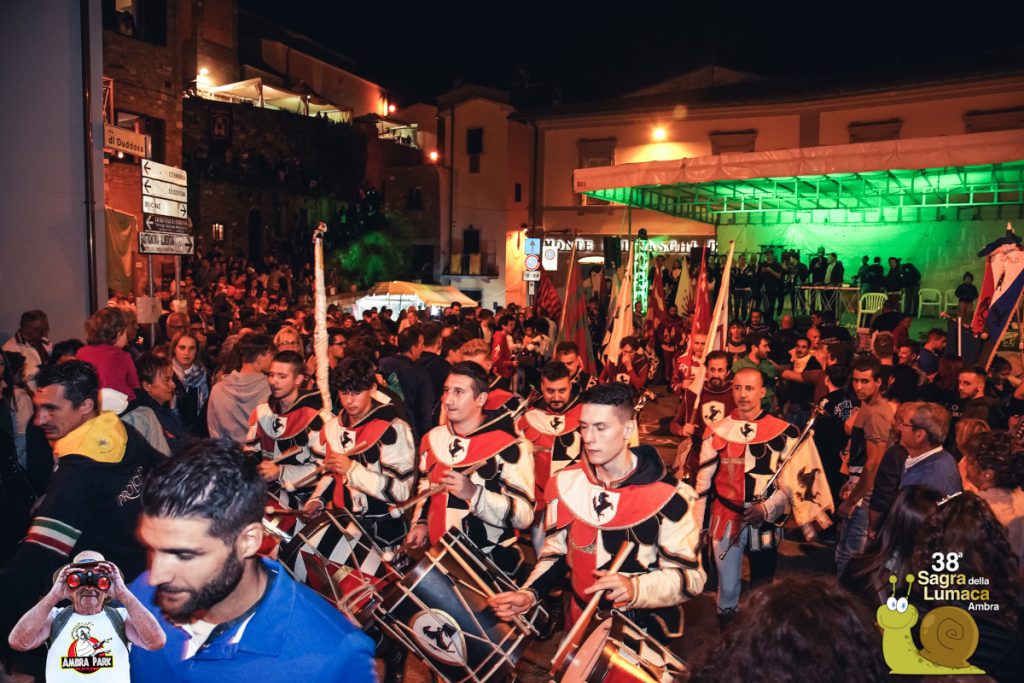HISTORY OF AMBRA
The ancient nucleus of Ambra is located on a small hill, placed between the left bank of the stream Ambra and the gorge of the moat, along the ancient road axis that from the castle of Montalto went down in Valdambra valley. It is an area frequented since the prehistoric period, as demonstrated by some archaeological findings near the current country, including the recovery of an Eneolithic axe, now preserved at the Pigorini Museum in Rome, and the discovery of a lithic industry attributed to the Upper Paleolithic in Gavignano.
In the Etruscan period is attested the presence of a large settlement on the top of the hill named Poggio Castiglioni, high ground located south-east of the current country, at a linear distance from this of about 1 km. The settlement was developed on a plateau partly artificial, supported by a monumental wall of about 2.40 meters thick. Inside the terraced area, wall structures that can be connected to various dwellings have been recovered. The attendance of the site is ascribable to a chronological arc between the end of the seventh and the second half of the sixth century BC.
Ambra in the middle age
In the early Middle Ages, until the XI century, the toponym Ambra was used to indicate the entire area near the parish church of Capannole. This last one, in fact, in a document of the 1090 is sita in Ambra and only subsequently is defined plebs S. Quirici de Capannole. The present village inherited its name during the XII century, when the castle of Ambra was built on the small hill. In the course of the centuries it became an outpost of various families among which the Guidi and the Ubertini, to then pass definitively under the control of the city of Florence. The defensive structure is still clearly visible in the urban layout of the historic center of the town and was included between the current via della Chiesa-vicolo della Luna and via del Fossato-Carbonaie: the latter clearly toponymic relics of the castle’s defensive system.
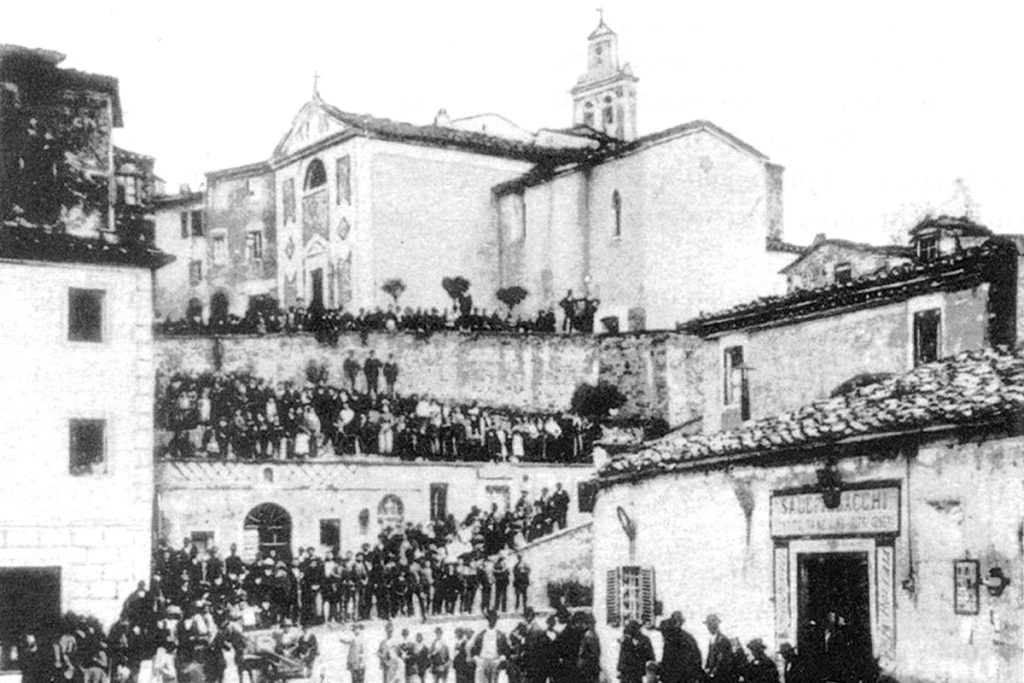
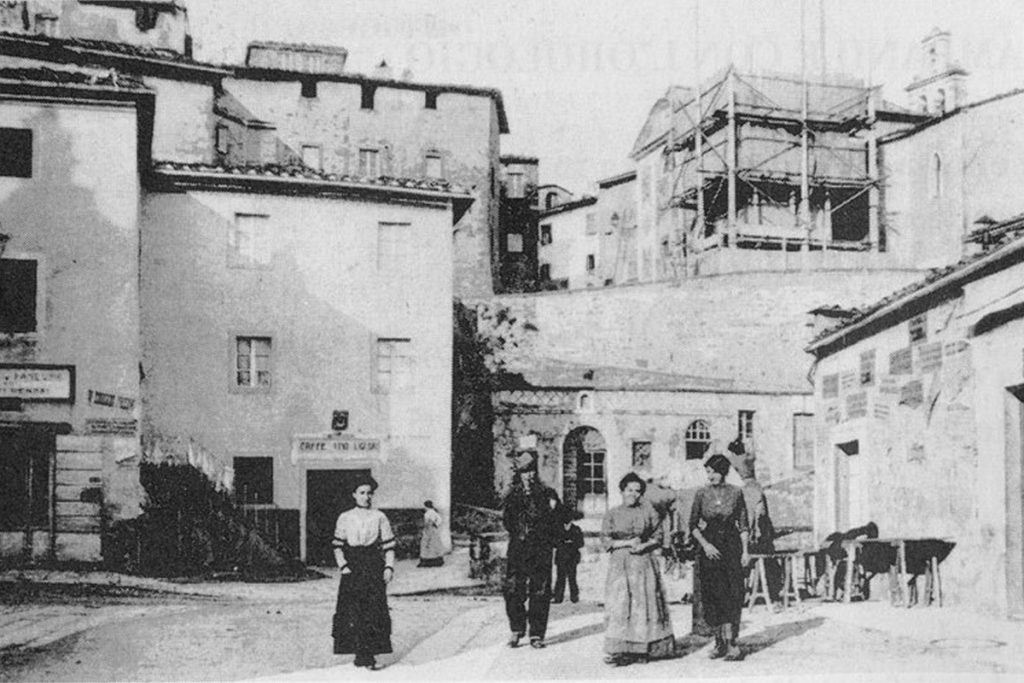
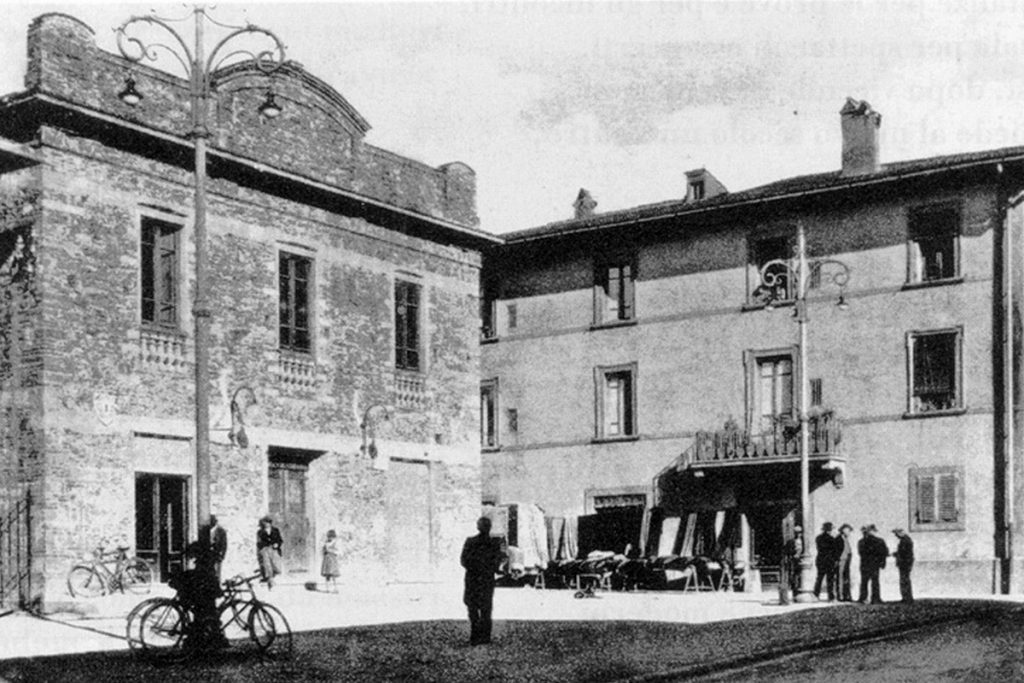
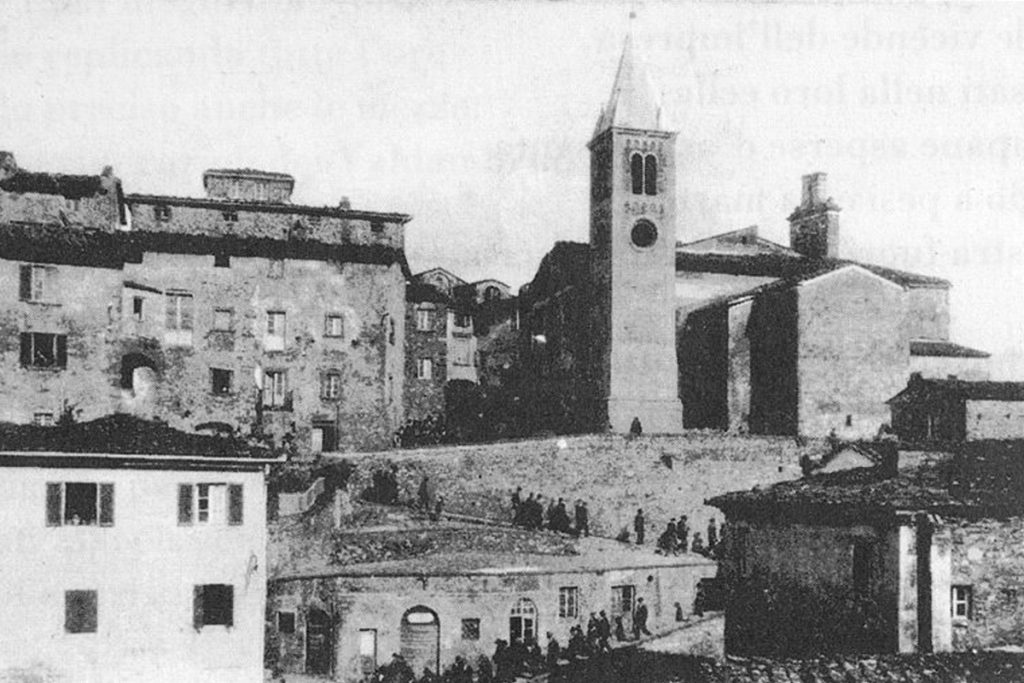
The wall circuit had a pseudo-triangular shape, with a door in the northern sector and probably a further access on the south side. Because of the various sieges, the most famous being that of 1270 which led to the almost total destruction of the castle by the Florentines, and natural events such as the earthquake of 1558, the traces of the ancient castle are currently very weak. The medieval architectural evidences still visible consist in some fragments of the walled enclosure in the eastern part, incorporated in the houses that are supported by it, in the door and the tower located in the northern sector and in traces of houses datable between the end of the twelfth century and the beginning of the next one.
Ambra history to date
Ambra knew in the course of the XV-XVI century an urban development beyond the castle walls, with the formation of a suburb in the southern sector, corresponding to the actual via Benvenuto Cellini and Vicolo della Luna. The present church of Santa Maria Assunta was built at the end of the XVI century, in substitution of the previous medieval building, destroyed by the earthquake of 1558. The church, enlarged during the XIX century, has lost most of its original characteristics, following heavy restoration works carried out in the first half of the XX century. The building currently has a single hall with a raised transept and a gabled roof with wooden trusses. Of great historical and artistic importance is the big canvas representing the Nativity of Mary, realized in 1600 by the artist from Montevecchio Michelangelo Vestrucci. The bell tower was built in 1914 to replace the original bell gable. Out of the medieval nucleus, in today’s via Duddova, there is the church of the Company of the Holy Cross, probably built in the 1670s. The building has a Latin cross plan with a gabled facade, with lateral pilasters in masonry and a circular oculus. Internally, in the presbyterial area, slightly raised, there is an altar in masonry of eighteenth-century workmanship, surmounted by a large tabernacle in which there is a bust of the Madonna di Provenzano. At the back of the altar there is a big canvas of the 17th century representing “The Invention of the Cross”, while the stone lectern is the work of the stone master Andrea Bianchi.
palio OF palla tonchiata
After the fall of the Tarlati Counts, there was a period of competition between Ambra and Bucine to get the Municipality. On June 7, 1923, the deputy Agostino Signorini presented a bill which foresaw the birth of the Municipality of Ambra.
The Palio della Palla Tonchiata is an event born in memory of this conflict, whose symbol is a stone ball with holes, also called “tonchi”. This because, according to the popular tradition, at the foot of the Town Hall of Bucine there was a stone ball that symbolized the supremacy of the village against the surrounding territory.
The story tells that the ball was stolen from Bucine twice by unknown authors. The first time it was found by the Carabinieri of Ambra, in the funds near the present pharmacy of the village. With the collaboration of the then municipal sweeper, the carabinieri managed to recover it and bring it to the barracks. While the second time, about fifty years ago, was never found again and since then were born many legends about where it may have been hidden. What is certain is that “she sees everyone, but no one sees her”.
This is how, since 1998, every year in the village of Ambra is remembered the sacking of the tonchiata ball through a test of strength and cunning. For the occasion, the town of Ambra is divided into five districts, the Pozzo, the Senese, the Piazza, the Castello and the Poggio, to each of which is assigned, by lot, a ball with tongs. Five balls, weighing about 80/90 kg, are then rolled by two pushers in a path inside the village. Since 2007 the pushers are chosen by the Pro Loco of Ambra and assigned to the districts by drawing lots.
Throughout the history of the Palio, there have been many differences in the choice of pushers. Initially, both people from the town and professionals participated. This meant that the game was no longer felt as it once was, since the professionals always led to victory the ward for which they ran. In this regard, in 2014 the Pro Loco of Ambra changed the rules, in order to create a game on equal terms with pushers exclusively from the country. The rules, approved by both the Council of the Pro Loco of Ambra, and the presidents of each ward, are as follows:
- A maximum of two competitors may participate in each ward;
- The ten competitors are chosen from among the people of the village and then matched by drawing lots;
- The ball pushers must meet the concept of “Valdambrini DOC”, that is, certified residents of the village of Ambra;
- In the stretches where the road is downhill, the competitors must obligatorily place one in front and one behind the ball, always remaining in the immediate vicinity, to protect the safety of the public and themselves;
The ball cannot be lifted off the ground; - The pushers must communicate ten days before the Palio their personal data and their medical-sports fitness certificate;
The extraction of the pushers is done on the afternoon of the Palio; - The President of the Pro Loco of Ambra, in the case of non-compliance of any of these points may proceed with the disqualification of the ward from the race.
